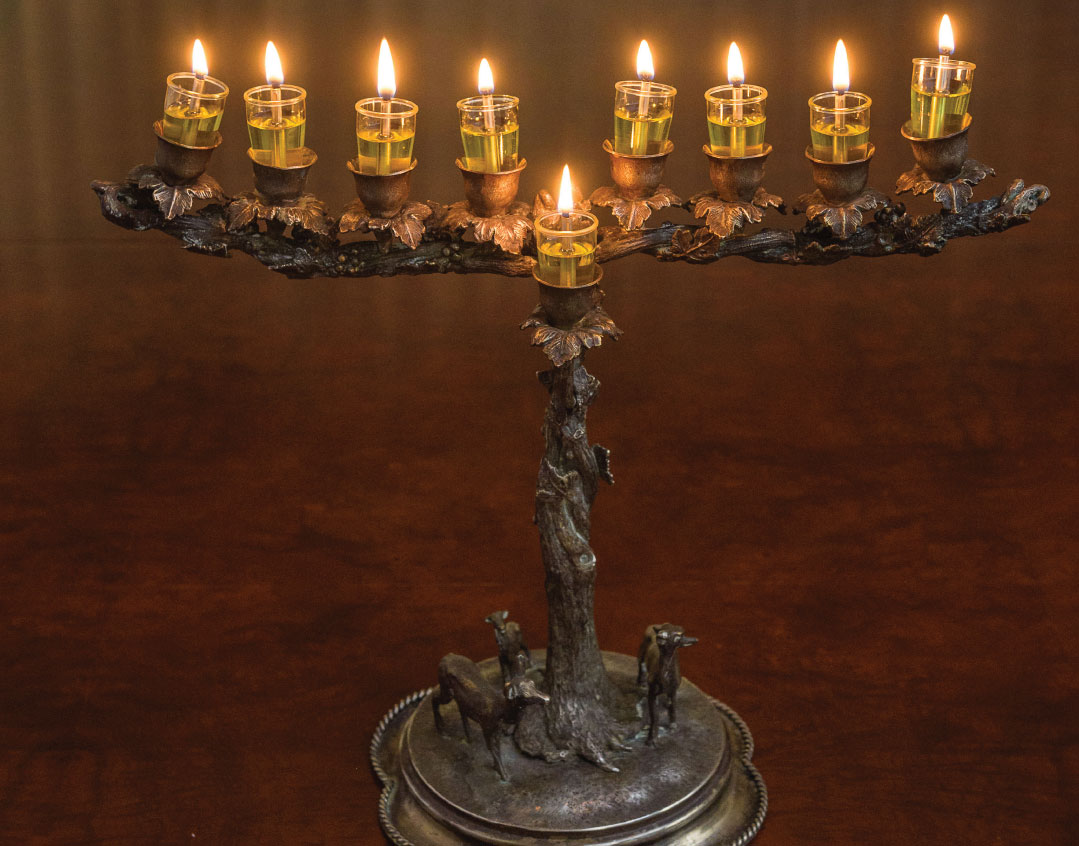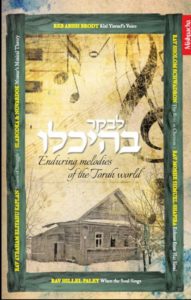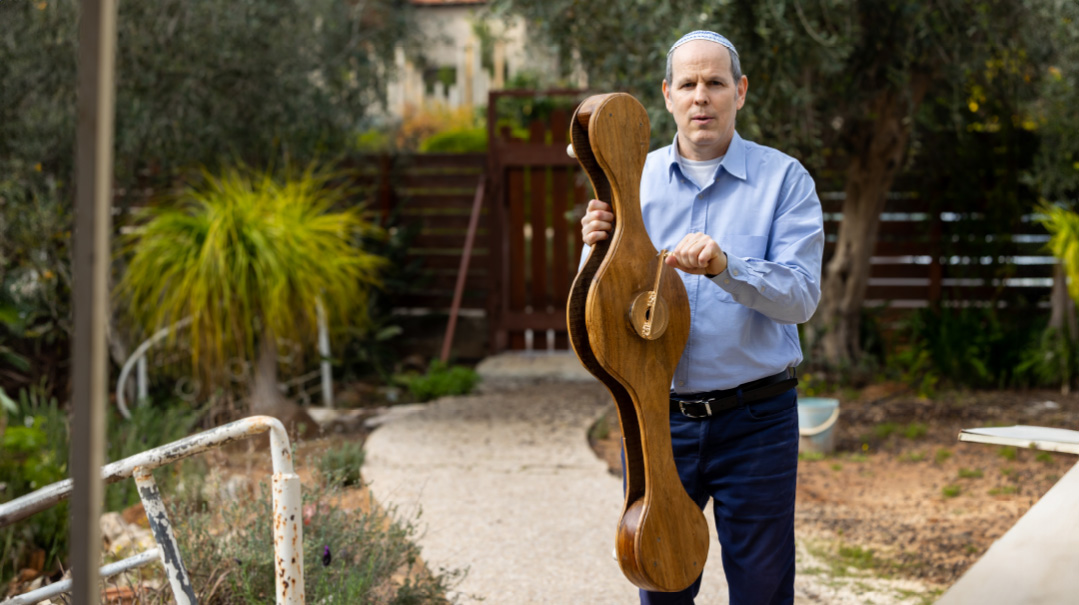A Menagerie of Menorahs

Yaakov Hoffman’s collection of unusual Chanukah menorahs sheds light on one of our most beloved ritual items

Photos: Naftoli Goldgrab & Lior Mizrahi
They began as humble oil containers made out of clay. But as the centuries passed, expert craftsmen turned the Chanukah menorah into a stunning work of art. During a recent visit to the home of Judaica collector Yaakov Hoffman, Mishpacha got a glimpse at intriguing menorahs that you probably won’t find in your local Judaica store.
Silent Bidder
Yaakov Hoffman doesn’t want to talk about himself — not even about when and why he became a collector of Judaica. We’re here to talk about Chanukah menorahs, he tells me. Period. Full stop. So don’t expect a story rich with Jewish geography: who married whom, who learned with whom, who went into business with whom, who has grandchildren who married the grandchildren of whom. The only yichus we’re going to talk about is the yichus of the stunning 14-karat gold Chanukah menorah sitting on his dining table, as well as a few other pieces in his collection.
Along the way, I will learn that Mr. Hoffman collects Judaica because he enjoys nice things — some of which are on display on the walls of his Jerusalem apartment, and some of which are sitting in the breakfront. (Needless to say, he employs various security systems.) For several decades he has been a visitor to world-class auction houses such as Sotheby’s, although private art dealers come to him too. And what perhaps delights him most is not to outbid every other bidder in the auction room, but to run across an item that is in some way unusual — perhaps even unique.
But again, we’re not here to talk about Mr. Hoffman. We’re here to talk about menorahs that are unusual. And one made from gold surely qualifies.
The Ruzhiner Rebbe’s Menorah
“The Rebbe of Ruzhin lit this,” says Mr. Hoffman, gesturing toward this exquisite menorah crafted from spun gold in 1836. The lacework technique is known as “filigree,” and it’s a hallmark of what’s known as the Baal Shem Tov style of menorahs.
Despite the name, this is not necessarily the type of menorah the Baal Shem Tov used to kindle his Chanukah lights. Rather, the style takes its name from where it first appeared, which was the region in the Ukraine where the Baal Shem Tov lived. The ornamentation used to decorate the back panel of a Baal Shem Tov menorah will vary, although there are a few standard motifs: columns representing Yachin and Boaz, the two pillars that stood in Bayis Rishon; an aron kodesh; and a large Torah crown, often flanked by birds, griffins, or lions.
This particular menorah has a few surprises, which Mr. Hoffman is happy to display. Open the doors to the aron kodesh and you’re greeted by three engravings: on the inside of the left-hand door is an image of the menorah in the Beis Hamikdash, in the center are the two cheruvim on top of the ark, and on the inside of the right-hand door is the Lechem Hapanim.
The menorah’s connection to Chanukah is obvious, but what about the other two? Mr. Hoffman points out that he Lechem Hapanim stayed fresh for eight days, corresponding to the eight days of the holiday. And the cheruvim? He discovered the connection two years after he bought this menorah, when he bought an aliyah for Zos Chanukah. Look in the Torah reading for the eighth day, and you’ll discover the connection too.
While there are many examples of silver Baal Shem Tov menorahs, according to Mr. Hoffman, this is the only known menorah crafted from gold. The reason is simple: Not many Jews could afford one.
“Even a silver menorah was expensive,” Mr. Hoffman says, commenting that people would work all winter for just a few rubles. “Only someone like the Ruzhiner Rebbe could afford a menorah made from gold.”
Garden of Delights
It’s a long way from the simple clay oil lamps of Talmudic times to this ultra-ornate silver menorah crafted in Russia in 1810. It’s thought that the form we are all familiar with — a “bench” for the row of oil receptacles that is attached to a backplate — only came into use during the Middle Ages. While some were meant to be attached to an outside wall to publicize the miracle, others were designed to sit in the window, for those who lived on an upper floor. The latter design included a new addition: feet for the menorah to stand on.
Chanukah menorahs shaped liked a candelabrum also appeared during the Middle Ages, but it’s thought this style was reserved for synagogue use. It was also during this time that Ashkenazim began to incorporate the shamash into the design, while Sephardim retained the custom of keeping the shamash separate.
The concept of beautifying the mitzvah was enthusiastically applied to the Chanukah menorah, with the seven-branched menorah found in the Beis Hamikdash being one of the most popular decorative motifs. The seven-branched menorah is often flanked by lions rampant (see glossary sidebar). The lion, of course, is the symbol of Shevet Yehudah, the tribe of Dovid Hamelech. That brings us to a connection to the Beis Hamikdash — and Chanukah.
(Excerpted from Mishpacha, Issue 791)
Oops! We could not locate your form.












